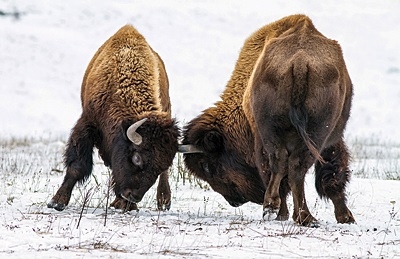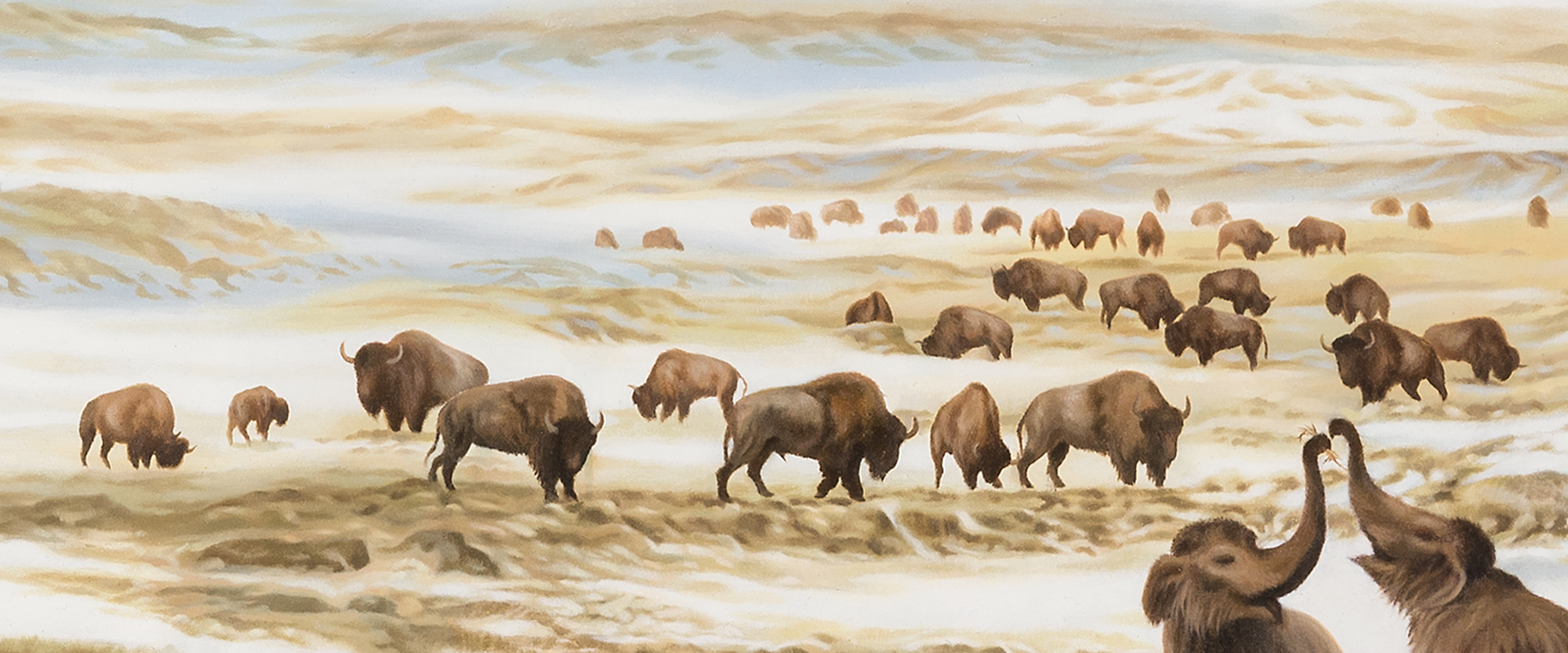Steppe Bison

Photo: Shutterstock
Not all of the iconic ice age animals went extinct at the end of the last glacial period. One example is the steppe bison. Steppe bison survived until the quite recently, and gave rise to two types of living bison we see today, the plains bison and wood bison. Although they had similar body size compared to their present-day cousins, the ice age steppe bison had much larger horns. The ancestors of steppe bison, called Bison bonasus, evolved in the grasslands of Europe and Asia during the early part of the Ice Age, over one million years ago.
Although bison are an iconic North American mammal, they were absent from this continent for much of the Ice Age. For over a million years, the North American landscape was dominated by mammoths and ancient horses. This picture changed around 160,000 years ago when steppe bison first crossed Beringia and soon became the most abundant large herbivore in North America. From Beringia, they spread as far south as Mexico. A broken piece of fossil foot bone (metacarpal) found in a high bluff along the Porcupine River near Old Crow in 2006 is the most ancient bison fossil found in North America.
The Most Abundant Ice Age Yukon Fossils
In some parts of Yukon, the permafrost is nearly a graveyard of ancient bones of steppe bison. Over 80 per cent of the fossil mammal bones from the Klondike gold mines are from steppe bison. Part of why scientists know so much about steppe bison is because, like the woolly mammoth, mummified carcasses have been found.
One of the most famous ice age carcasses is that of 36,000 year old "Blue Babe" that was discovered in a gold mine near Fairbanks, Alaska in 1979. Blue Babe had a spectacular blue colour because its preserved skin was covered by the mineral vivianite. Thick tufts of preserved reddish brown fur indicate that these bison were well insulated for the cold ice age climates. The carcass also had deep claw marks stretching down its side—the marks of a Beringian lion.
Recent Discoveries
The study of ancient DNA preserved in steppe bison bones has revealed a fascinating historical tale. After the arrival of steppe bison in North America, their population experienced several booms and busts. During one period of decline, around 30,000 years ago, the advance of glaciers across most of Canada created a barrier that separated the northern populations from those that lived in the southern part of North America. The split of these two populations—north and south—had dramatic consequences for bison evolution.
Did you know?
The bison you see in Yukon today are not direct decendants of the steppe bison that lived here during the Ice Age. Bison were reintroduced to Southern Yukon in the 1970s and now thrive on the grasslands around Kluane and Aishihik Lakes.
Near the end of the Pleistocene, around 13,000 years ago, bison populations in Yukon and Alaska were dwindling, yet groups to the south of the glaciers were expanding and ultimately evolved into their modern forms. A bison bone found near Annie Ned Creek, between Whitehorse and Haines Junction, indicates that the northern population in Yukon survived until only about 400 years ago.
Want to learn more? Check out our Beringian Research Notes on the steppe bison.

